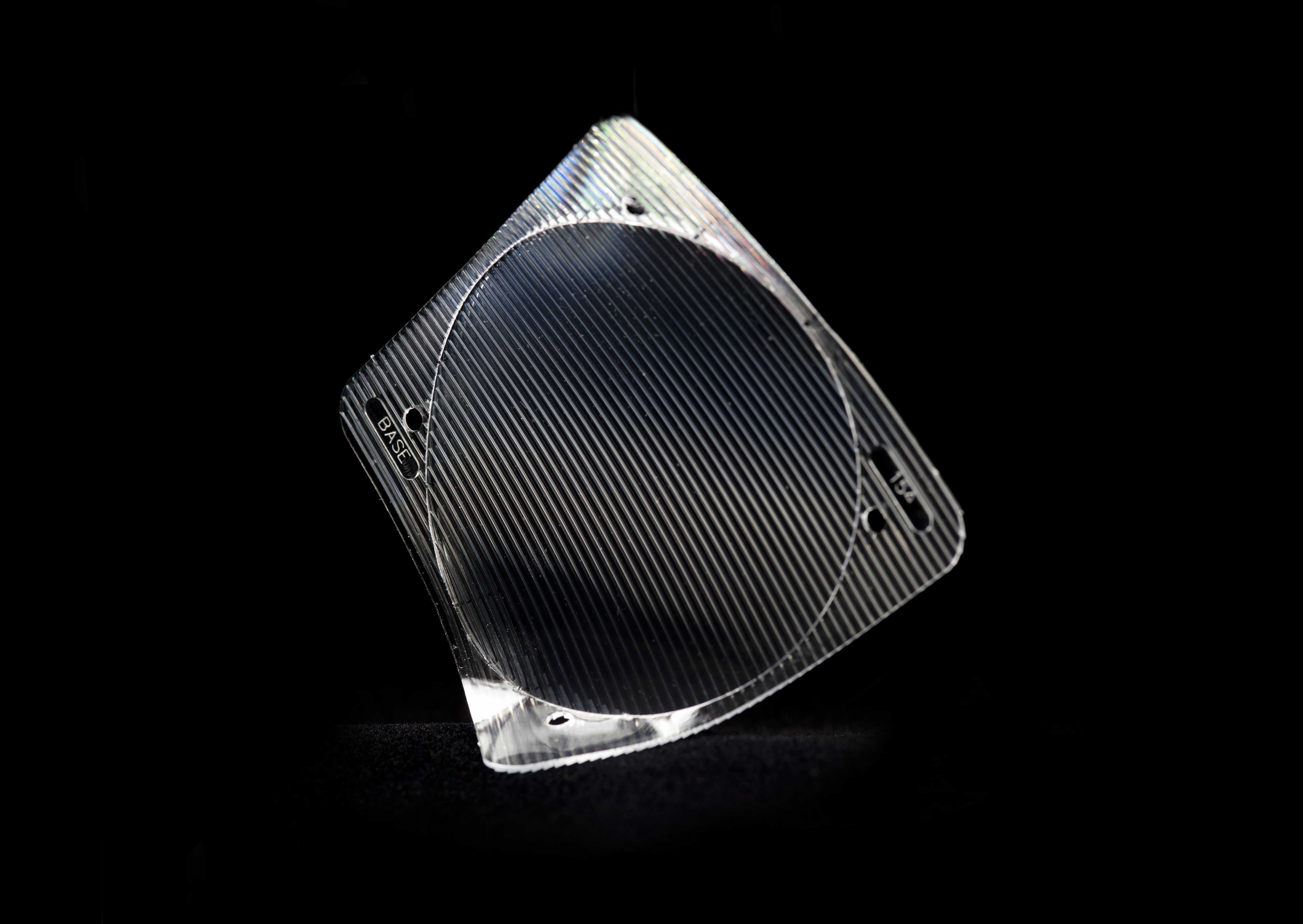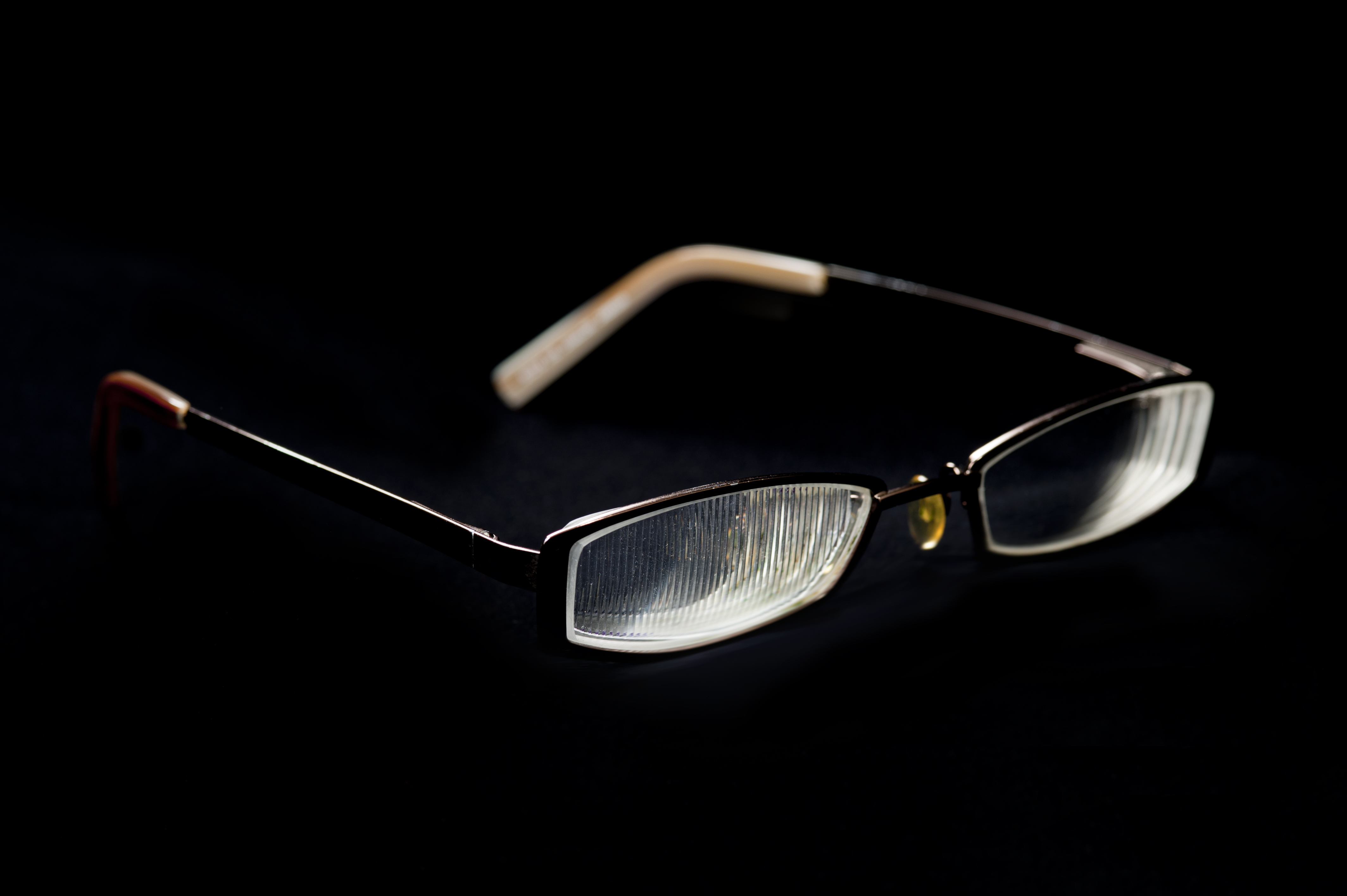Fresnel prism
Information for patients from the Orthoptic Department
This leaflet has been given to you by your orthoptist, who has suggested that a fresnel prism may be the best treatment for you at this stage.
What is a prism?
A prism is a wedge-shaped piece of glass or other transparent material, which deflects rays of light toward the base. It is routinely used in orthoptic practice to measure the size of a squint (how much the eye turns in or out) and can be used to redirect the rays of light onto the correct point of the back of the eye.
What is a fresnel prism?
-
 A fresnel prism
A fresnel prism -
 A fresnel prism attached to a glasses lens
A fresnel prism attached to a glasses lens
A fresnel prism is a thin transparent plastic sheet which induces a prismatic effect (it alters the direction of the image entering the eye). One side has a series of angular grooves (prisms), and the other smooth side is attached to the lens of your glasses.
Why have I been given a fresnel prism?
There are many reasons for using a fresnel prism. Your orthoptist will discuss with you the reason why you have been advised to use one. The most common reasons are to:
investigate whether your brain has the potential to use your two eyes together as a pair
stop double vision (diplopia)
use alongside eye exercises, which you have been given by your orthoptist
predict the outcome of squint surgery.
How is the fresnel prism fitted?
Your orthoptist will fit the prism to your glasses using water. If you have your glasses with you, they will do this during your orthoptic appointment, and give you instructions on how to clean and care for your glasses / prism.
If successful you may be able to have the prism fitted to any additional glasses you have.
How long do I need to wear the prism?
How long a prism is needed depends upon your individual needs and your eye condition. Sometimes a prism is needed for several months, but the strength of it changes as your eye condition stabilises.
It may be that a fresnel prism is eventually replaced with a prism that is incorporated into your glasses.
What are the benefits of fresnel prisms?
A fresnel prism:
can relieve double vision
is lightweight
is easy to clean and remove
is a less expensive option before having the prism strength incorporated into glasses (if possible); and
it is easy to change prism strength, as your eye condition changes.
What are the disadvantages of fresnel prisms?
Prisms may cause slight blurring of your vision, due to the lines on the plastic prism.
They have to be fitted onto a glasses lens. If you do not need glasses to correct your eyesight, a pair can be made up with plain glass.
Are there alternatives to fresnel prisms?
To correct the deviation / prevent double vision
Small amounts of prism can be incorporated into a pair of glasses, but this may make the lenses both thick and heavy.
To prevent the double vision by occlusion of one eye (covering the eye)
Blenderm (opaque sticky film) which can be stuck to the glasses lens.
Bangeter foil (plastic film of various densities) which can be stuck to the glasses lens.
Glasses with opaque (not able to see through) lens from your optometrist.
These alternatives can be discussed in more detail with your orthoptist at your appointment.
How do I clean a prism?
You do not usually need to remove the prism from your glasses to clean it, just wipe it with a lens cloth. If the fresnel prism becomes dirty it can be removed and cleaned with a soft toothbrush and soapy water and reapplied.
If your prism falls off:
Place the glasses lens under a gentle stream of water, to dampen the surface
Place the flat side of the fresnel prism’s plastic onto the glasses lens, and push out any air bubbles.
Blot away any excess water and allow the lens / prism to dry.
You must refit the prism in the correct orientation (position); your orthoptist will advise you on this.
Further information
If you have any further questions or concerns, please contact your local Orthoptic Department, where your prism was fitted, at any time to discuss your worries or concerns with the orthoptist treating you.
Or you can phone the Orthoptic Department at Kent and Canterbury Hospital for advice on 01227 868615.